#lgblesbian
Text
Empar Pineda i Erdozia
• Empar is a Spanish feminist activist born in Hernani, Gipuzkoa in 1944.
• She was enrolled in a German nun's school, where she was required to learn English.
• As there was no public university in the Basque Country, she moved to Madrid, where her sister lived.
• She participated in the anti-Francoist student movement and was banned from enrolling at the Universities of Madrid and Barcelona. She ended up enrolling at the University of Salamanca in 1964, and a little later at the University of Oviedo, where she graduated in Romance philology.
• She returned to Madrid, where she began teaching Language and Literature while continuing her membership in left-wing organizations.
• An anti-Francoist militant, she was arrested by the authorities and spent some time in Martutene Prison.
•In the 1970s, during the transition to democracy, she moved to Barcelona. There she was the leader of the Communist Movement of Catalonia.
•In 1985 she was interviewed in the magazine Interviú with the headline "I am a lesbian just because ", to demand an end to the repression of homosexual women.
• In 1980 she was co-founder of the Lesbian Feminist Collective of Madrid and participated in the creation of the Right to Abortion Commission.
• In 2008 she received the Creu de Sant Jordi for "her dedication sustained for so many years in defense of women's rights, from the action – as an active member of various organizations – and reflection – as a co-author of several volumes, including 'El feminismo que existe'."
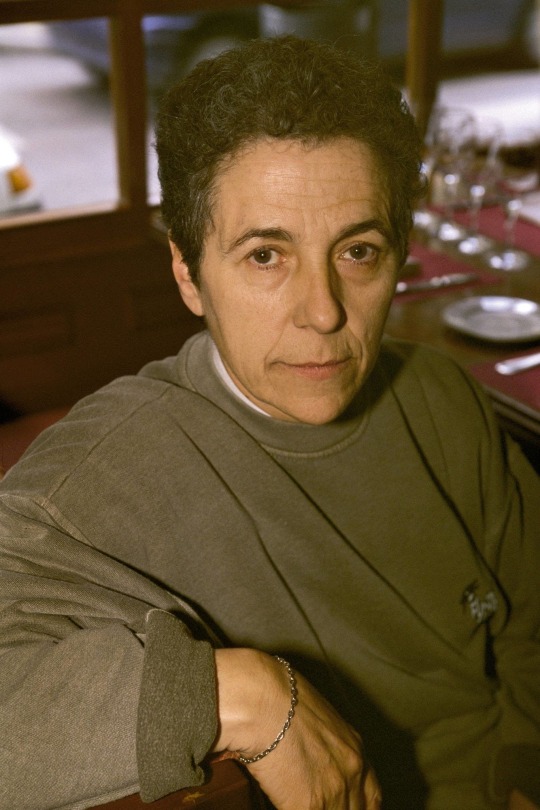
5 notes
·
View notes
Text
Lina Poletti (1885-1971)
Was an Italian writer, poet and feminist. Considered one of the first italian woman to openly declare her lesbianism.

She used to wear masculine clothes and was a quite rebellious woman for her epoch.
In 1908 she attended the First National Congress of Women. This is where she met met the well-known writer Sibilla Aleramo, who shared her commitment to social change.
Both quickly got involved in a love affair, though Aleramo was living with a well-known poet Giovanni Cena at the time. Poletti and Cena didn’t like it and the two of them eventually left Aleramo.
The following year, Poletti married Santi Muratori, the director of the Biblioteca Classense in Ravenna, though they did not live together.
Shortly after their marriage, she met Eleonora Duse, at the time a popular stage actress, and became involved with her. The two moved in together in a house located in Florence, Italy, where Poletti started working on plays for Duse.
From 1918 to 1958 Poletti was in a relationship with the Countess Eugenia Rasponi, a noblewoman and ardent fellow feminist.
They later moved to Rome where they attended theosophical and philosophical meetings and traveled throughout Europe and Asia seeking answers for existence.
Poletti was unable to write during the twenty years of fascism in Italy, as she and Rasponi were constantly under the scrutiny of authorities and their home was often raided.
Poletti died on 12 December 1971 in Sanremo, in the northern coastal region of Liguria.
62 notes
·
View notes
Text
Sylvia Beach (1887-1962)
A writer, publisher and the owner of the prominent Shakespeare and company bookstore in Paris (yes, the pictures of which you have probably seen on pinterest).
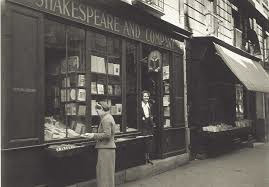
She was an American-born bookseller and publisher who lived most of her life in Paris, where she was one of the leading expatriate figures between World War I and II.
Sylvia was born in United Stated but in 1901 her family moved to Paris. Her father’s name was Sylvester Beach and that might be why she changed her birthname (Nancy) to Sylvia later so that she could be Sylvia Beach.
While conducting research at the Bibliothèque Nationale, in a French literary journal Beach read of a lending library and bookshop, La Maison des Amis des Livres. When she came there, she met an owner who turned out to be a young woman Adrienne Monnier. The two later became lovers and lived together for 36 years.
Beach started dreaming of her own book shop , so with Monnier's help, Beach opened an English language bookstore and lending library that she named Shakespeare and Company.
Shakespeare and Company quickly attracted both French and American readers, including aspiring writers to whom Beach offered hospitality and encouragement as well as books.
In July 1920, Beach met the writer James Joyce at a dinner party. Soon after, Joyce joined Beach's lending library. Joyce had been trying, unsuccessfully, to publish his manuscript for his masterpiece, Ulysses, and Beach, seeing his frustration, offered to publish it.
Shakespeare and Company gained considerable fame after it published Ulysses in 1922.
Beach would later be financially stranded when Joyce signed on with another publisher, leaving Beach in debt after she had bankrolled, and suffered severe losses from, the publication of Ulysses.
Shakespeare and Company experienced financial difficulty throughout the Great Depression of the 1930s but remained supported by wealthy friends, including Bryher.
In 1936 when Beach thought that she would be forced to close her shop, André Gide organized a group of writers into a club called Friends of Shakespeare and Company. Subscribers paid 200 francs a year to attend readings at Shakespeare and Company.
Beach later recalled "we were so glorious with all these famous writers and all the press we received that we began to do very well in business".
In 1956, Beach wrote Shakespeare and Company, a memoir of the inter-war years that details the cultural life of Paris at the time. The book contains first-hand observations of James Joyce, D. H. Lawrence, Ernest Hemingway, Gertrude Stein, Stephen Benet and many others.
After Monnier's (her lover) suicide in 1955, Beach had a relationship with Camilla Steinbrugge.Although Beach's income was modest during the last years of her life, she was widely honored for her publication of Ulysses and her support of aspiring writers during the 1920s. Beach died in 1962.
George Whitman (her friend) opened a new bookshop in 1951 at a different location in Paris (in the rue de la Bûcherie) originally called Le Mistral, but renamed Shakespeare and Company in 1964 in honor of Sylvia Beach. Since his death in 2011, it has been run by his daughter Sylvia Whitman (who was named after Sylvia Beach).
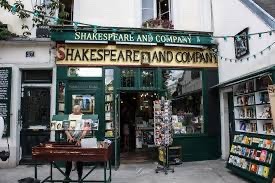

19 notes
·
View notes
Text
Anna Freud
She was a British psychoanalyst of Austrian-Jewish descent born in Vienna and the youngest child of Sigmund Freud.
She followed the path of her father and contributed to the field of psychoanalysis, and she may be considered one of the founders of psychoanalytic child psychology.
After the Freud family were forced to leave Vienna in 1938 with the advent of the Nazi regime in Austria, she resumed her work in child psychology establishing the Hampstead Child Therapy Course and Clinic in 1952 (now the Anna Freud National Centre for Children and Families).
Anna Freud appears to have had a comparatively unhappy childhood, in which she may have suffered from depression which caused eating disorders.
She was a lively child with a reputation for mischief. In adolescence she took a precocious interest in her father's work and was allowed to sit in on the meetings of the newly established Vienna Psychoanalytical Society which Freud convened at his home.
Anna Freud created the field of child psychoanalysis, and her work contributed greatly to our understanding of child psychology. She also developed different techniques to treat children. A fundamental principle of Anna Freud's work is that every child should be recognised as a person in his or her own right.
While Anna was the closest intellectual and emotional companion of Sigmund Freud, she was also a lesbian. Freud taught that lesbianism is always the fault of the father and is curable by psychoanalysis. Hence, Anna involuntarily became an object of his inappropriate experiments.Nevertheless, Freud failed to “correct” Anna’s lesbianism.
Anna Freud's life-long romantic partner was Dorothy Burlingham, an American child psychoanalyst and educator. Anna and Dorothy soon developed intimate relationships and lived together as "companions".
Freud died in London on 9 October 1982. Her life-partner Dorothy Burlingham and several other members of the Freud family also rest there.
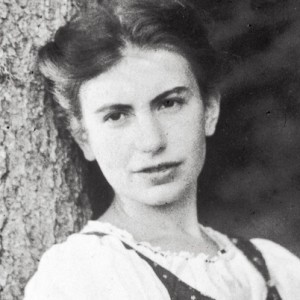
198 notes
·
View notes
Text
Ladies of Llangolen

The "Ladies of Llangollen", Eleanor Butler and Sarah Ponsonby, were two upper-class Irish women whose relationship scandalised and fascinated their contemporaries during the late 18th and early 19th centuries.
Their families lived 15 miles (25 km) from each other. The two women met in 1768, and quickly became close. Over the years they formulated a plan for a private rural retreat. It was their dream to live an unconventional life together.
Rather than face the possibility of being forced into unwanted marriages, they escaped together in April 1778. Their families found them and forcefully tried to make them give up their plans—but in vain. They moved to Wales and then sent for Sarah's servant, Mary Caryll, who lived with and worked for them for the rest of her life. Mary died first and they were buried in the same plot and share the same grave marker.
Putting their plan into motion, they undertook a picturesque tour of the Welsh countryside, eventually settling in North Wales. Living first in a rented home in the village of Llangollen, they moved in 1780 to a small cottage just outside the village they called Plas Newydd or "new mansion". They proceeded to live according to their self-devised system, though they could rely on only a modest income from intolerant relatives, and eventually a civil list pension. They "improved" Plas Newydd in the Gothic style with Welsh oak panelling, pointed arches, stained glass windows, and an extensive library, in which they received their many guests. They hired a gardener, a footman and two maids. This led to significant debt, and they had to rely on the generosity of friends.
After a couple of years their house became a haven for visitors travelling between Dublin and London, including writers such as William Wordsworth, Percy Shelley, Lord Byron and Sir Walter Scott, but also the military leader the Duke of Wellington and the industrialist Josiah Wedgwood, aristocratic novelist Caroline Lamb, who was born a Ponsonby, came to visit too. Anne Lister from Yorkshire visited the couple, and was possibly inspired by their relationship to informally marry her own lover. Eventually their families came to tolerate them.
Butler and Ponsonby lived together for 50 years. Their books and glassware carried both sets of initials and their letters were jointly signed. Towards the end of their lives, they both dressed in black riding habits and men's top hats; some visitors thought it was eccentric and outdated – especially the hair powder – but neighbours thought the clothes were practical for living outdoors.
142 notes
·
View notes
Text
Lesbian summer camps in New Zealand
Between 1975 and 1991 there were nine summer camps organized by lesbians in Canterbury (a region on New Zealand's island) and also a separate weekend camp at Nolan House in Kirwee.
Those camps were not just a holiday getaway, but a solace for lesbians, a place where they could be with their community, together, a place where they could feel free to be themselves.
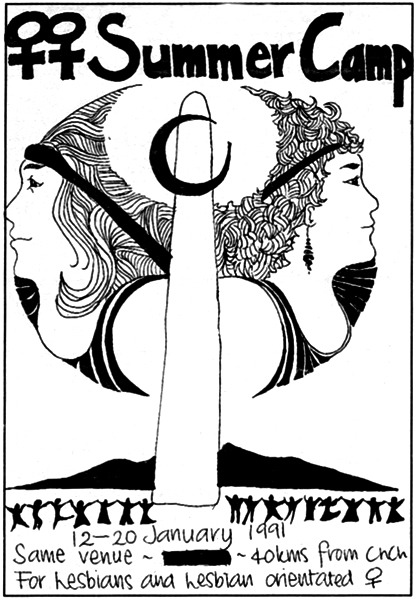
The 1970s camps were initiated by Christchurch feminist lesbians who wanted somewhere cheap to take their children on holiday, and somewhere private where they would not have to deal with the negative reactions of straight people.
Advertised by word of mouth, the camps were attended each year by about 30 lesbians and their children.
They took musical instruments and made songs, told stories, swam and sunbathed, played cards, shot and cooked possums and created a lesbian language.
As one of the campers said "At camp we created our own reality."
The second series of camps were held at the Boys' Brigade Camp, Waipara, from 1985 to 1987, at Stavely Campsite in 1988, and at Leigh Camp, Loburn, from 1989 to 1991.
The women who held it tended to be more middle class than the earlier organisers; more had come out through the women's movement, and they called their camps 'Womyn's Summer Camps', inviting both lesbians and 'lesbian-oriented' women.
These camps were bigger, more structured, and widely advertised in lesbian and feminist magazines and organisations throughout New Zealand and overseas. They attracted lesbians from around New Zealand and were a focal point for travellers from other countries.
Due to precautions and confrontations, the organizers didn'd advertise the location of the first club and booked it as the 'Women's Health and Fitness Club'.
The period was one of challenge and questioning among Christchurch lesbians, and the organisers were initially wary of potential conflicts, for example over children, access for disabled women, and how the all-Pākehā organisers could make Māori lesbians welcome.
Lesbians came to camp overwhelmingly to relax and have fun. They played softball, canoed, tramped and ran a huge variety of workshops.
For many lesbians, the camps were a safe space to try out teaching and presentation skills. There were concerts, dances, home-made videos and a circus. Short affairs and long relationships started and ended.
Huge circles of women welcomed newcomers, debated how to deal with intrusive teenage boys at the swimming hole, and invented ad hoc rituals to celebrate lesbian heritage.
For many, the strongest memory was of the communal swimming and sunbathing, the feeling of safety and freedom that came with being naked in the sunshine among so many other lesbians.
Back in the city the euphoria spilled into rounds of parties, and in 1987 a weekend mid-winter camp was held at Arthur's Pass.
About 150 women and 20 children attended the camp.
The second series of camps ended partly because of the difficulty finding site-owners willing to lease to lesbians.
121 notes
·
View notes
Text
Yuasa Yoshiko ( 1896 – 1990)
Was a Russian language scholar and translator of Russian literature in Shōwa period Japan.
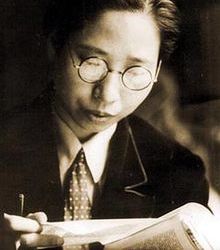
Born in Kyoto, Yuasa was an early supporter of the feminist movement in Japan.
Moving to Tokyo, she was also drawn to leftist political movement and became involved with a leading female proletarian literature movement novelist Chūjō Yuriko.
In 1924, after Chūjō divorced her husband, the two women began to live together, and from 1927–1930, traveled together to the Soviet Union, where they studied the Russian language and literature, and developed a friendship with a noted movie director Sergei Eisenstein.
While Yuasa has also been romantically linked to writer Tamura Toshiko among others, Chūjō is said to have been the love of Yuasa's life.
Yuasa was never again romantically linked to another woman after Chūjō's marriage to proletarian author and Japan Communist Party leader Miyamoto Kenji , although in an interview later in life Yuasa said that the word "lesbian" (rezubian/レズビアン) applied to her.
After their return to Japan and after Chūjō remarried, Yuasa continued with her translation work of Russian authors, especially the works of Maxim Gorky, Anton Chekhov and Samuil Marshak. She is especially known for her translation of Chekhov's The Cherry Orchard. Yuasa died in 1990, and her grave is at Tōkei-ji, a temple in Kamakura.
After her death, the Yasa Yoshiko Prize was established for the best translation of a foreign language stage play into Japanese.
Yuriko,Dasvidaniya is a 2011 drama film, depicting a brief period in 1924. The film is based on two of Yuriko's autobiographical novels, Nobuko and Futatsu no niwa, and on Hitomi Sawabe's non-fiction novel Yuriko, dasvidaniya: Yuasa Yoshiko no seishun.
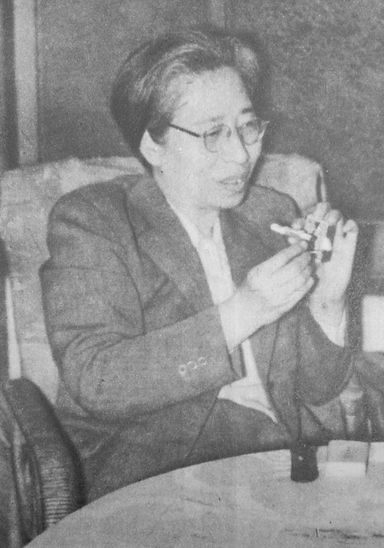
109 notes
·
View notes
Text
Takiko Mizunoe
(20 February 1915 – 16 November 2009)
The first woman to produce films in Japan
She was an actress and a male impersonator,possibly a butch lesbian
One of her best works is "Crazed Fruit" (1956)

In 1928, she enrolled in the training program for the all-female Shochiku Opera Company. There, she was given the stage name Takiko Mizunoe. (Her birth name was Umeko Miura)
Mizunoe cut her hair short, a novelty at the time.This marked the beginning of Mizunoe's signature "cross-dressed fair lady" style, and she became known for her appearances onstage in a silk hat and tuxedo.
at age 18, Mizunoe led one of the Japanese labor movement's few successful actions of the period when she headed a strike of the Shochiku Opera Company's performers in reaction to wage cuts. By that point, Mizunoe had become a star, and news of the "Pink Strike"—so called because it was led by young women in their teens and twenties—spread throughout the media.
The strike lasted for a month, and nearly 50 strikers were arrested, including Mizunoe.But eventually the action was successful, in part because the company could not be seen as exploiting its most popular star, and the company's management offered improved labor conditions and a wage increase for musicians.
She toured northern China, the United States, and Europe, but returned to Japan as the country entered WW2. During the war, Japan imposed restrictions on cross-dressing, which forced Mizunoe to perform in female roles. Touring also became difficult due to restrictions.
Mizunoe never married
She died of natural causes in 2009 at the age of 94

476 notes
·
View notes
Text
Jones (or Jonesie)
Jonesie lived in Jamaica, Kingston. She was born circa 1920.
She is mentioned in the essay of Makeda Silvera “Man Royals and Sodomites: Some Thoughts on the Invisibility of Afro-Caribbean Lesbians,” as Makeda writes about conversations with her grandmother about lesbians in their community. Jonesie was one of those lesbians.
Besides, Ria Brodell wrote about Jonesie's life in her project "Butch Heroes".
Jones or,as some people called her, Jonesie was described as a “mannish-looking Indian Woman with flashy gold teeth."
She dressed in her husband’s clothes, smoked Craven A cigarettes and could often be found in her yard with her dogs, always barefoot.
She was loud and brazen, but generous and easy to talk to.
She loved to reminisce about her past and especially about her love of women, she would say things like, “Dem girls I use to have sex with was shapely. You shoulda know me when I was younger, pretty, and shapely just like the ‘omen dem I use to have as my ‘omen.” She would brag about how she could go to Coronation Market and pick up any woman she wanted.
The fact that Jonesie was married provided her with a certain amount of protection, because at the time if you were a "man royal" or a "sodomite",you would be persecuted, especially if you were unmarried.
People made fun of her, not because she was a lesbian, but because she would stumble home from the rumshop drunk. Jonesie was tough and no one would really mess with her and she threatened to beat up anybody who tried.

55 notes
·
View notes
Text
Eudy Simelane
She was a South African footballer who played for the South Africa women's national football team and an LGBT-rights activist.
Simelane was born in KwaThema, Gauteng, South Africa, in 1977.
Simelane played as a midfielder for Springs Home Sweepers F.C. and the South Africa women's national football team. She also coached four teams and was studying to be a referee.
She was raped and murdered in her hometown.
According to local gay-rights organization Triangle, the practice of "corrective rape" is widespread in South Africa, whereby men rape lesbians purportedly to "cure" them of their sexual orientation.
2 of the four attackers were pled guilty and sentenced to life, but the remaining two accused were acquitted.
A miniature bridge was erected in KwaThema, Springs, Gauteng in her honour in 2009.


37 notes
·
View notes
Text
Tatiana de la Tierra
Tatiana was a Latina lesbian writer, born in Colombia in 1961.
She emigrated to the US in 1969, at the age of eight.Her family settled in Florida and that was where she first discovered her passion for books and librarianship.

She befriended the head librarian at the elementary school she attended and she was trusted by the head librarian to such an extent that she was given a key to the back room where all the sexuality books were kept, and she would peek at these at a young age.
Although de la tierra did not come out as lesbian until 1982, she knew she was attracted to females around the time she reached age 10 or 11. When she was young, she would explore the female body by creating games to play with some of her girl friends that included looking at each other's nipples and vaginas.
However, when she became a teen, de la tierra desexualized herself because some of her friends and peers made her feel like outsider for being so curious about sexuality. That's why she did not have romantic partners when growing up. Only after graduating high school and going to college, she began to explore her sexuality again.
De la tierra's awareness of her sexuality later became a very important part of her career as a writer. She fell in love with poetry before even reading the work of any lesbian writers.
Tatiana had her first official library-related job as a librarian assistant while being a college student.
She was the creator of the first international Latina lesbian magazine Esto no tiene nombre "This doesn't have a name".
Much of her writing was bilingual and bicultural featuring both the English and Spanish language and contained very sexual content. Esto no tiene nombre magazine published many works of other Latina lesbian writers.
At first, Tatiana was a self-published writer and her works were distributed by-hand at gatherings, including at the Encuentros de Lesbianas Feministas de América Latina y del Caribe ("Gatherings of Lesbian Feminists of Latin America and the Caribbean").
Through her work, de la tierra gave voice to LGBTQ people of color and inspired other writers to speak about sex openly. A lot of de la tierra's work challenges heteronormative views. Many conservatives were offended by her writing because she spoke and wrote so unapologetically. De la tierra did not hold back when it came to eroticism.
De la tierra died from health issues on July 31, 2012. Her papers and unpublished materials were donated to the University of California, Los Angeles to be studied.

42 notes
·
View notes
Text
FannyAnn Viola Eddy (1974 - 2004)
Eddy was a lesbian activist and a courageous woman with a deep commitment to lesbian and gay rights in Sierra Leone and throughout Africa.

In 2002, she founded the Sierra Leone Lesbian and Gay Association, the first of its kind in Sierra Leone.
They documented harassment, discrimination and arrests of LGBT people in the West African nation. The organization also provided social and psychological support to a fearful underground community.
She traveled widely, addressing the United Nations and other international groups.
In April 2004, she advocated the passing of the Brazilian Resolution at the UN in Geneva.
Eddy was murdered on September 29, 2004, when a group of at least three men broke into the office of the Sierra Leone Lesbian and Gay Association in central Freetown, gang-raped her, stabbed her, and eventually broke her neck.
Eddy left behind a 10-year-old son and a girlfriend Esther Chikalipa.
In 2008, the FannyAnn Eddy Poetry Award was named in her honour.

34 notes
·
View notes
Text
Isa Asp


Isa Asp (4 February 1853 – 12 November 1872) was "the first woman Finnish poet". She is considered Finland's first lesbian icon.
Asp was a precocious child who followed her father's example and wrote poetry. She was taught Swedish by her grandmother. When she first attended school they recognised her pre-knowledge.
The family moved to Suomussalmi. Her first surviving poetry was written there when she was 19. The poetry talks of her respect for her father and her country.
In 1864 she attended a private school in Raahe where she was taught in Swedish. She was befriended by the local priest Fanny Hethal. She graduated in 1866 she was at home talking to her friends by letter.
She created a magazine called "Lahja" which was only shown to her family, but it ran for 22 issues.
In 1871 Asp began to write poetry in Finnish after attending a teacher training college in Jyväskylä.
Multiple sources state that Asp was lesbian, she became known as the "Sappho of Finland", and is also considered to be Finland's first lesbian icon. Asp wrote what was interpreted as emotionally and eroticly charged poems for her best friend Lydia Lagus at the seminar in Jyväskylä. The biography of JH Erko, published by Martti Jukola in 1930 state that she was lesbian.
She died aged nineteen of tuberculosis leaving about 100 poems the most known of which is "Lullaby to a Wave". After death her poems were published, statues have been created and several biographies written.
169 notes
·
View notes
Text
Olga Tsuberbiller (Ольга Николаевна Цубербиллер)
Olga was a Russian mathematician famous for creating the textbook Problems and Exercises in Analytic Geometry. The book has been used as a standard text for high schools in Russia since its creation in 1927 and still is widely used nowadays.
Olga Tsuberbiller (born Olga Nikolaevna Gubonina) was born in Moscow, in 1885.
Her mother was engaged in farming and her father was employed by the Chinese Eastern Railway.
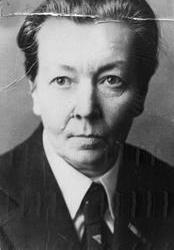
She was the granddaughter of the industrialist Pyotr Gubonin and spent part of her youth on the family's estate at Gurzuf (Yalta, Crimea). The resort, which now makes up Gurzuf was founded by Gubonina's grandfather and uncle. The two designed the 93 hotels and summer cottages and it quickly became a favorite place of writers, as it had been in earlier years for Alexander Pushkin.
Olga immediately began teaching analytical geometry in the Bestuzhev Courses, right after graduating from the courses herself.
The Bestuzhev Courses in St.Petersburg were the largest and most prominent women's higher education institution in Imperial Russia.
She was married once, hence the last name Tsuberbiller. Although she was widowed during the Russian Civil War.
Olga counseled and tutored students and worked to popularize the study of math, while she was working in the women's courses.
She also was a professor at the First Moscow State University.
In 1923, Tsuberbiller met and became friends with Sophia Parnok, a famous Russian poet of a Jewish descent. The exact nature of their relationship wasn't clear, because Sophia didn't refer to Olga in the same sexual context as she described the rest of her relationship with female lovers.
While occupying an important place in her life, Tsuberbiller was a protector, as expressed in the poem cycle Half-voiced, which describes Tsuberbiller as a type of guardian angel.
Olga became Parnok's closest friend, and when Parnok's lover Ludmila Erarskaya was hospitalized for a mental break, Tsuberbiller was the one to whom Parnok turned to regain her equilibrium. Parnok moved in with Tsuberbiller, though Tsuberbiller was already busy providing care for her mother and her brother, who was at the time unemployed.
In 1927, Tsuberbiller published the first edition of "Problems and Exercises in Analytic Geometry", which became a standard text in Soviet high schools.It is still a standard text in Russian high schools and technical institutions.
By 1928, Parnok had begun to have serious health issues and Tsuberbiller, who was also ill took her to Ukraine for the summer.
In 1930, Tsuberbiller became a professor at the Institute of Fine Chemical Technology and at the end of that same year, she and Parnok moved to a new apartment on Nikitsky Boulevard with more room where the couple could regularly entertain colleagues of Tsubersbiller's.
Tsuberbiller and Parnok must have had a kind of "open" relationship, because Sophia openly dated other women while still living with Olga, and the latter allowed Sophia freedom.
Sophia died while living with Olga and she took responsibility for Parnok's literary estate upon Parnok's death.
Soon after Parnok' death, Tsuberbiller began a relationship with Concordia Antarova,a noted opera singer.
Tsuberbiller became one of the Honored Scientists of the Russian Soviet Federative Republic in 1955. As she had with Parnok, Tsuberbiller took care of Antarova through various illnesses until her death in 1959. She retired from the university in 1969.
Tsuberbiller died on 28 September 1975 in Moscow and was buried in the Novodevichy Cemetry near Antarova.
Olga was featured in the series "Butch Heroes" , the art project by Ria Brodell about butch lesbians from all around the globe and throughout the history.
31 notes
·
View notes
Text
Victoria Kent Siano
Born in 1891, in Málaga, Victoria was a Spanish lawyer and republican politician.
Kent was affiliated to the Radical Socialist Republican Party. She became a member of the first Parliament of the Second Spanish Republic in 1931.
One of the most outstanding and controversial moments in Kent's personal and political life would be her opposition to women's suffrage.
Kent was against giving women the right to vote immediately, arguing that, as Spanish women lacked at that moment social and political education enough to vote responsibly, they would be very much influenced by the Catholic priests, damaging left wing parties.
She had a controversy about this subject with another feminist in the parliament, Clara Campoamor. This caused her certain unpopularity and, when women were given right to vote, she lost her seat – as she had predicted – to the conservative majority in 1933.
Her partner was Louise Crane, a prominent American philanthropist. She helped Victoria to publish Ibérica. Ibérica featured news for the expatriate Spanish community in the United States.Kent was a prominent member of the Spanish Republican party, opposed to Franco. Many prominent writers, including Salvador Madariaga, contributed to Ibérica.

After the Spanish Civil War, Kent went into exile in Mexico, but soon moved on to the United States. She died in New York in 1987, and is buried alongside her partner.
Colleges in Málaga, Fuenlabrada, Marbella, Torrejón de Ardoz (Instituto de Educación Secundaria Victoria Kent), and a railway station in her home town of Málaga, have been named after her. Historians have not adequately discussed her lesbianism.
In 1986 she was awarded the medal of San Raimundo de Peñafor, but because of her old age she was not able to receive it in person.
16 notes
·
View notes
Text
Bet van Beeren (1902 - 1967)
Bet van Beeren was a flamboyant, legendary bar owner in Amsterdam.

While hers wasn't the first bar that allowed LGBT persons to openly associate, the fact that she was openly lesbian, and accepting of a very diverse clientele, led her establishment to be one of the most known.
Was born in 12 February 1902 , in Amsterdam, the Netherlands.
She was the oldest daughter and one of thirteen children of the couple. Bet's education ended at middle school because her family needed her to work.
Van Beeren went to work in a canning factory on Haarlemmerweg, quickly working her way up to foreman, but she didn't like the job and the work was dangerous.
She lost two fingertips while working and after a fight with her boss, quit and went to work for her uncle at his pub, Amstelstroom.
She also rode around town in leather clothing on her motorcycle and sold fish.
In 1927, she bought the bar with loans from the Oranjeboom Brewery and thereafter, was always loyal to that brand of beer,though other breweries later tried to gain her patronage.
It was very unusual for a woman to own a business at that time. She renamed the pub, Café 't Mandje (The Basket Café) because her mother brought the food in every day in a basket.
Van Beeren ran an open establishment where lesbians and gays could freely associate as long as there was no kissing, which would have violated the vice laws and have cost her her liquor license.
Her mixed clientele included artists, intellectuals, pimps and prostitutes, sailors...
Van Beeren, craving the spotlight, often dressed in a sailor suit or leathers, entertaining her clients with singing and dancing.
She was openly lesbian, though she could entertain wealthy men if it would put meat or pastries on her family table.
She drank a lot, some reports were 40 bottles of beer a day, and could curse like a sailor.
Making a lot of money from the pub, van Beeren was known for her charitable works, helping the poor, children and the elderly.
Among her other legendary deeds, she allowed the bar to be used as an arms depot for the Dutch resistance during the Nazi occupation of the Netherlands.
Van Beeren died of liver disease on 16 July 1967. She laid in state on the billiard table of the pub for several days before her burial.
Greet, van Beeren's younger sister, continued to operate the business until 1982, when she closed it because of the heroin trade expansion in the area. Some of the items from the bar were incorporated into the Amsterdam Museum in 1998, but for the most part, the building remained untouched until Greet, shortly before her death, sold it to her niece, Diana van Laar.
Van Laar completed a renovation of the pub and reopened it on 2 April 2008.
In 2017, Bet was honored by the city of Amsterdam when a canal bridge was renamed in her honor.

61 notes
·
View notes